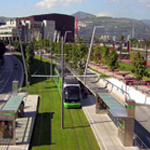The integration of urban transformation government and mobility management in European experiences
Abstract
Starting from Nineties, many experiences, focused on the integration between urban and territorial transformation government and mobility management and aimed at achieving objectives of sustainability, have been carried out in different European cities. In these experiences, the integration between urban transformation government and mobility management has been tested at different scales and with different approaches. In detail, such an integration is pursued both through the definition of the dimension, localization and spatial and functional features of new settlements, both through the requalification of the existing ones by the improvement of transport infrastructures, the public space design, the location of activities connected to the public transport network, the traffic flows regulation. With reference to such experiences, the paper outlines a synthetic view of different case-studies focused on the most recent integrated policies referred to the territorial transformation government and to the mobility management. Then, the most significant weaknesses and the more innovative aspects of some case-studies are highlighted both for the new settlements and for the existing ones.Downloads

Copyright (c) 2014 Tema. Journal of Land Use, Mobility and Environment

This work is licensed under a Creative Commons Attribution 4.0 International License.
Authors who publish in this journal agree to the following:
1. Authors retain the rights to their work and give in to the journal the right of first publication of the work simultaneously licensed under a Creative Commons License - Attribution that allows others to share the work indicating the authorship and the initial publication in this journal.
2. Authors can adhere to other agreements of non-exclusive license for the distribution of the published version of the work (ex. To deposit it in an institutional repository or to publish it in a monography), provided to indicate that the document was first published in this journal.
3. Authors can distribute their work online (ex. In institutional repositories or in their website) prior to and during the submission process, as it can lead to productive exchanges and it can increase the quotations of the published work (See The Effect of Open Access)
